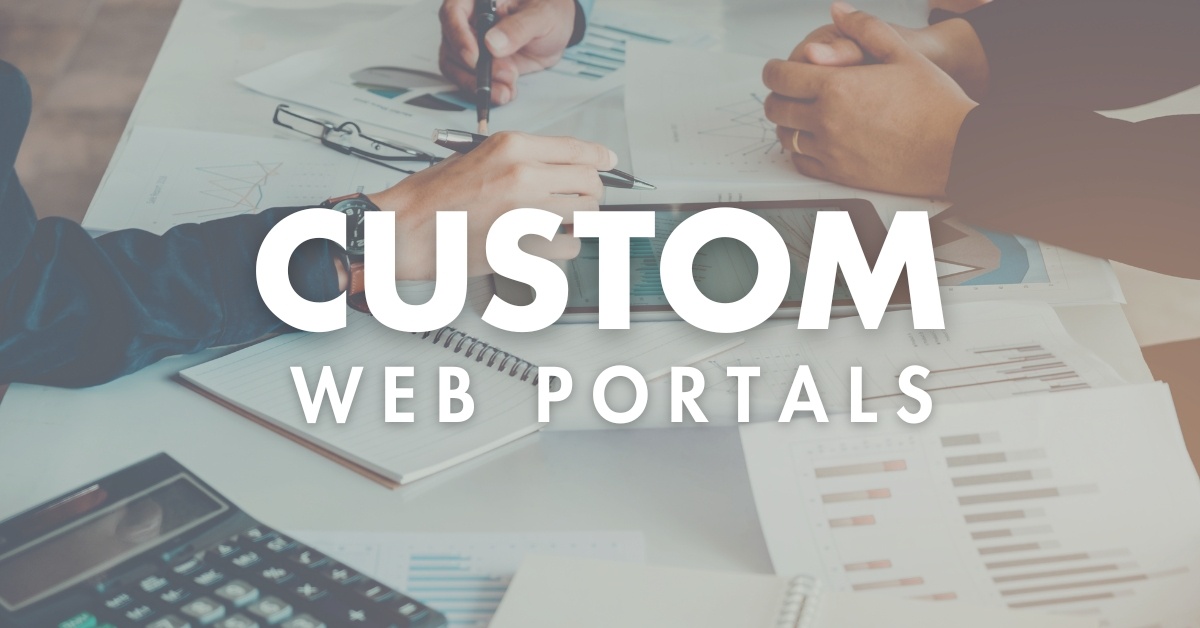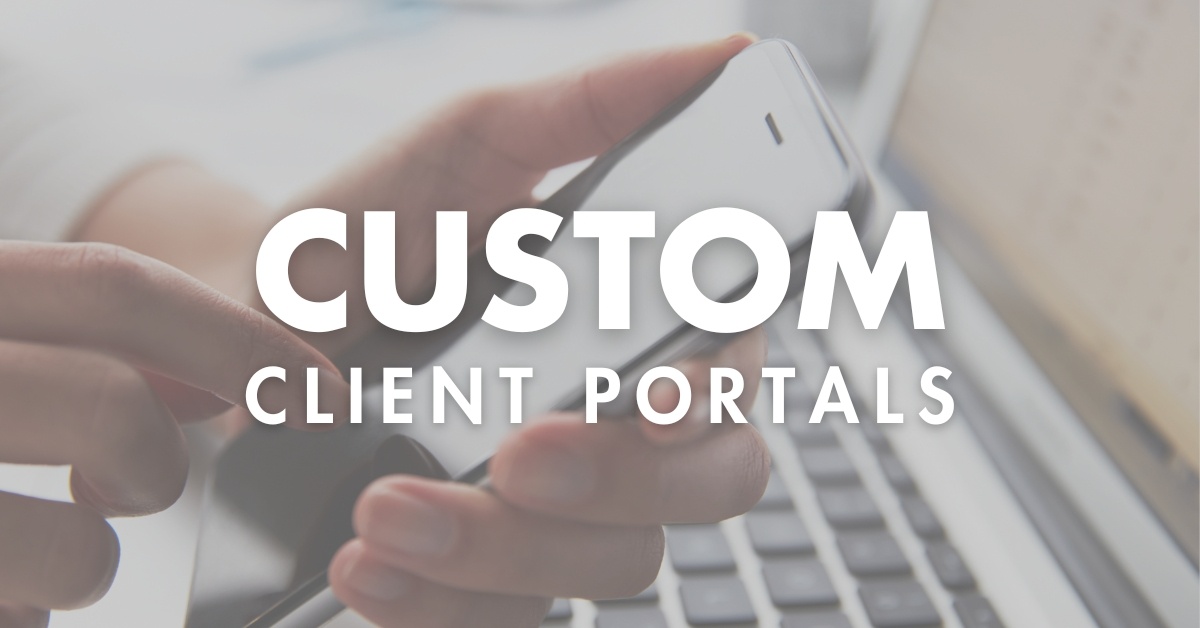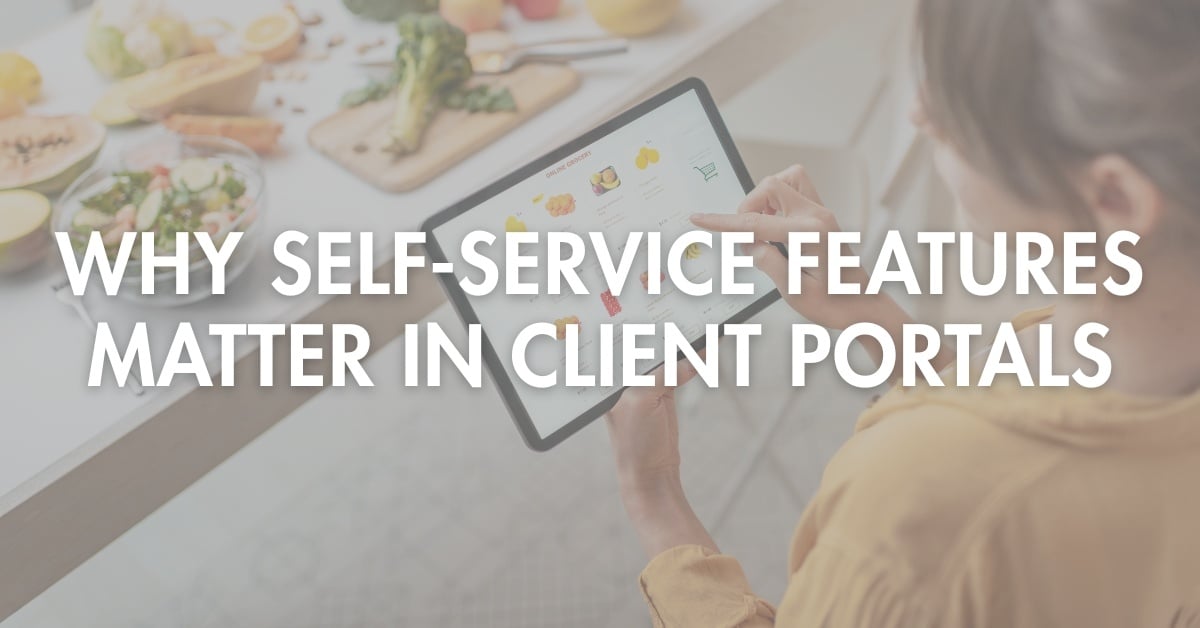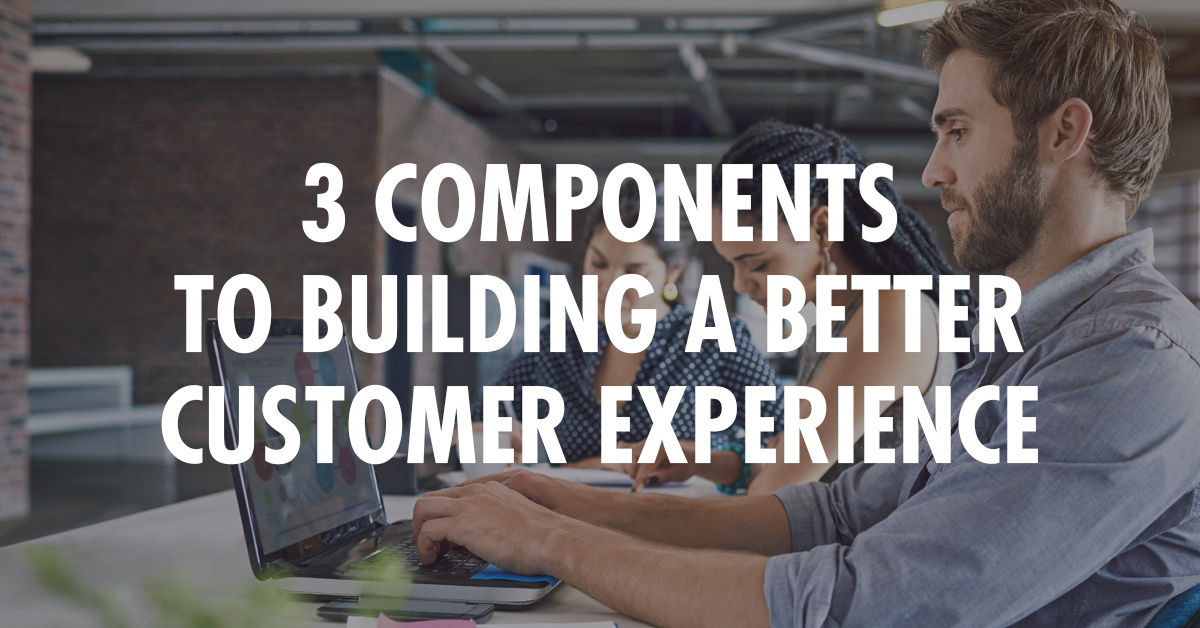Custom Client Portals
Ever feel like you're juggling a million emails, documents, and client requests? Client portals are designed to fix that. In fact, they're probably...
Improve customer satisfaction and increase operational efficiency with a client portal.
Take control of your operations with customized software solutions.
Help your in-house dev team get more done, faster with our Midwest-based experts.

With so much technology available, businesses are under constant pressure to elevate customer experiences, optimize operations, and remain competitive in fast-changing markets. With so many tools and technologies to choose from, finding the right solutions can be overwhelming. That’s where custom web portals come in.
A custom web portal is more than just another online tool; it’s a tailored platform designed to meet your unique business needs. Whether you want to streamline workflows, enhance customer engagement, or provide employees with better access to resources, a well-built custom web portal can make all the difference.
But what exactly sets a web portal apart from a traditional website? How do different types of portals serve unique purposes? And what goes into developing a solution that delivers real ROI?
In this guide, we’ll explore:
By the end of this guide, you’ll have a solid understanding of custom web portals and how they can drive growth and efficiency in your organization.
Let’s start by addressing a common question: how do web portals differ from websites?
Before diving into the specifics of web portals, it’s important to establish how they differ from traditional websites. While both operate online, their purposes and designs are fundamentally distinct.
Websites are public-facing platforms designed to provide information to a wide audience. Businesses typically use websites for:
Websites prioritize accessibility and ease of navigation, making them ideal for connecting with a broad audience.
In contrast, a web portal is a secure, user-specific platform designed to provide personalized access to information, tools, and services. Web portals often require user authentication and are tailored to meet the specific needs of their users. Key features include:
While websites are open to the public, web portals are typically private and focus on delivering targeted functionality for specific user groups, such as employees, customers, or partners.
Web portal development is the process of creating a centralized online hub that serves as a gateway for accessing information, services, and tools. Remember what we covered before: unlike traditional websites, web portals focus on delivering a personalized, secure, and interactive experience tailored to your specific user groups.
It may seem like all software is built the same, but that couldn’t be further from the truth. When implementing a web portal, the software you choose can have a significant impact on its functionality and the end-user experience. Put simply, the success of your web portal lies in the software that powers it.
Many businesses consider off-the-shelf solutions as the framework for their web portal, and for some, these software options work well. However, it’s important to remember that this software provides the foundation for managing user accounts, controlling access, and delivering the tailored experiences your customers, employees, and vendors expect.
With this in mind, you’ll want to ensure that your web portal software seamlessly integrates with your existing systems, such as:
While off-the-shelf solutions can provide a starting point, custom web portal development ensures that your portal is designed to seamlessly integrate with these systems. A custom solution allows for tailored functionality, giving your business the flexibility to create a central hub that meets your unique needs while enhancing efficiency across various operations.
The choice of software plays a pivotal role in determining the functionality, scalability, and long-term success of your portal. Custom development takes this a step further, ensuring your portal not only works as intended but also grows with your business.
When most people think of web portals, customer portals often come to mind. However, web portals can take many forms depending on your organization’s goals. Here are ten common types of portals businesses can create:
Each of these portals is designed to address specific challenges and provide tailored solutions for its intended audience, helping organizations achieve their unique goals.
Now that we’ve explored the common types of web portals, it’s important to understand how they can be categorized into two main types: vertical and horizontal portals. Each serves a distinct purpose, and understanding their differences can help you build the best web portal solution for your business needs.
Let’s start with vertical web portals. These portals are designed to serve a specific industry or audience, providing specialized tools, workflows, and resources tailored to address unique challenges within that niche. Vertical portals are highly customized, offering targeted solutions that make them invaluable for organizations with well-defined operational needs.
Vertical portals are ideal for businesses that operate in industries with unique workflows, compliance requirements, or specialized operational challenges. They provide a focused approach, helping organizations streamline processes and improve user engagement within their specific field.
In contrast to vertical portals, horizontal web portals are designed for broader use across multiple industries and user groups. These portals prioritize flexibility, scalability, and versatility, making them suitable for organizations that require general-purpose functionality.
Horizontal portals are ideal for businesses looking for scalable solutions that can serve diverse user groups and adapt to various use cases. They work well for organizations that need a flexible platform to unify operations across multiple departments or industries.
When considering the development of a web portal, one of the first questions businesses ask is, "How much does it cost to develop a web portal?" The cost can vary significantly depending on several factors, such as the portal’s complexity, the features required, and the expertise of the development team.
Web portal development services typically include strategy, design, and development. Costs can range from $50,000 for a basic portal to over $500,000 for an enterprise-level solution. Several factors influence these costs, including:
While these services can be a significant investment, they are essential for creating a portal that delivers real value to your business.
Creating a web portal involves several key steps to ensure the final product aligns with your business objectives and meets user expectations. While the process may vary for each organization, it always begins with one essential step: defining your business’s unique needs.
The best custom web portals are those designed to meet your business’s specific and unique needs. While off-the-shelf solutions can be a good starting point for some organizations, custom portals offer distinct advantages that ensure a solution is tailored to your goals and challenges.
|
Aspect |
Off-the-Shelf Solution |
Custom Web Portal |
|
Cost |
Typically, lower upfront cost. |
Higher initial investment but better ROI long-term. |
|
Implementation Time |
Quicker setup since it’s pre-built. |
Longer development time, tailored to your needs. |
|
Customization |
Limited customization options. |
Fully customizable to align with your business goals. |
|
Integration |
May require workarounds for existing systems. |
Seamlessly integrates with your current tools. |
|
Scalability |
Restricted to the features and limits provided. |
Can grow and adapt alongside your business. |
|
Security |
Standard security protocols. |
Advanced, tailored security features for compliance. |
Off-the-shelf solutions can work well for businesses that:
Custom web portals are ideal for businesses that:
For example, an employee portal might focus on enhancing communication and collaboration across departments, while a customer portal could prioritize 24/7 support and self-service account management. Customization ensures the portal delivers maximum value to both its users and your organization.
By weighing the pros and cons of off-the-shelf and custom solutions, you can make an informed decision that aligns with your business’s goals, budget, and future growth plans. Custom portals may require a larger initial investment, but the benefits they deliver—especially in terms of flexibility, security, and scalability—make them a worthwhile option for many organizations.
Successful web portals showcase how these platforms can solve specific business challenges and enhance user experiences. Whether it’s streamlining operations, fostering collaboration, or delivering personalized content, the best examples illustrate the transformative potential of a well-designed portal.
Each of these examples highlights a few key elements that define the best web portals:
Custom web portals are not just tools; they are powerful solutions that can transform how businesses operate, interact, and grow. From understanding the types of portals to exploring their costs, development process, and real-world examples, it’s clear that the right portal can deliver immense value.
Whether you’re looking to build a vertical portal tailored to your industry or a horizontal portal that serves a broader audience, investing in a well-designed solution can help your business achieve its goals more efficiently.
Let us help you create a platform that works for your unique needs. Contact us today to get started!

Ever feel like you're juggling a million emails, documents, and client requests? Client portals are designed to fix that. In fact, they're probably...
 Read More
Read More

3 min read
Customers are the backbone of your business; everything you are, do, and plan is centered around your customers’ satisfaction and their...